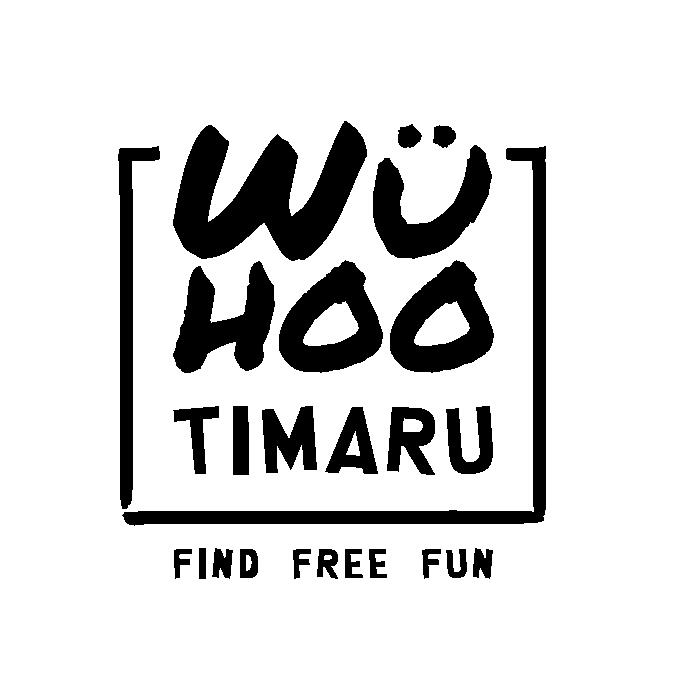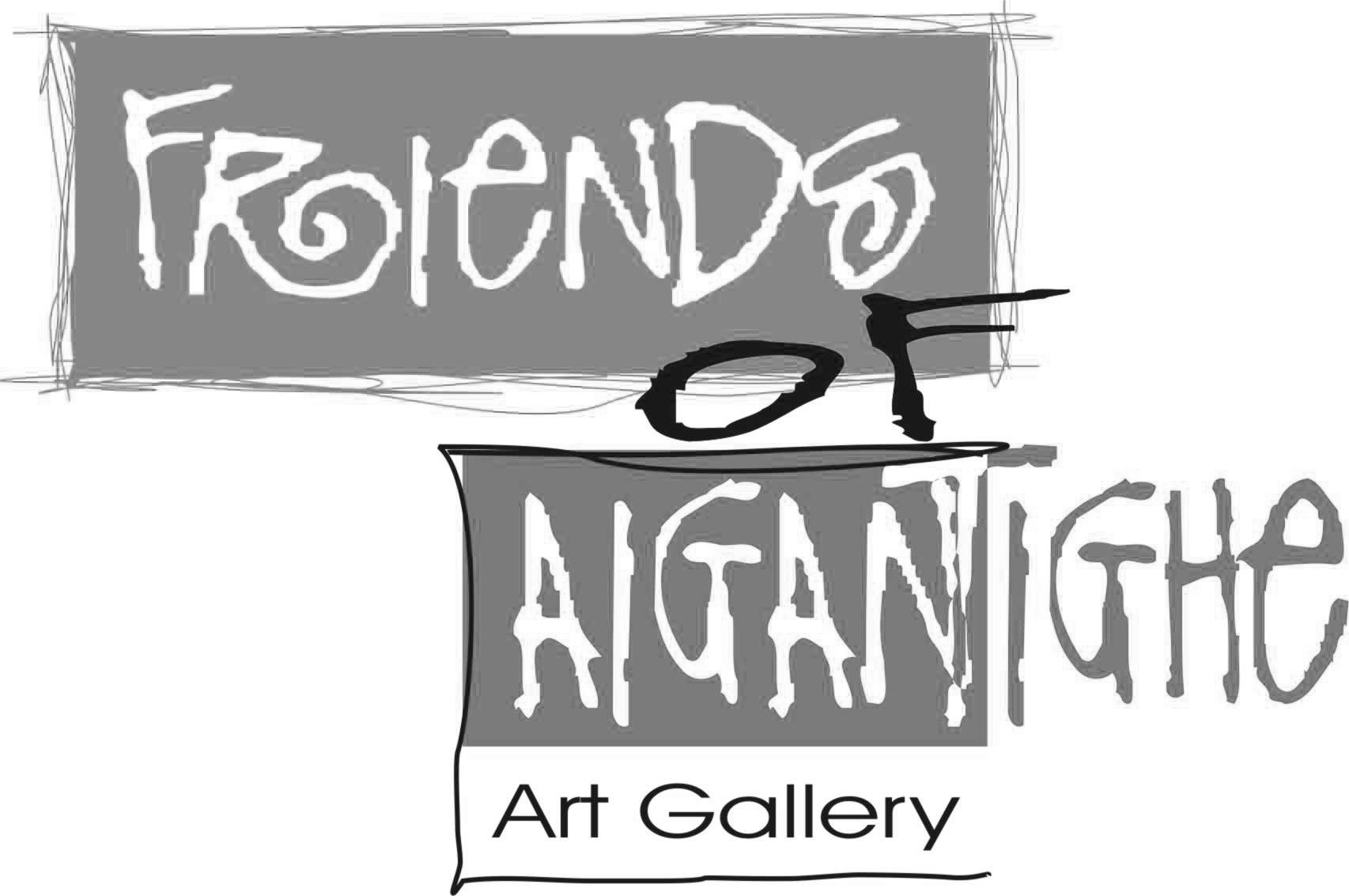Our Collection - Beyond the four walls
Aigantighe Art Gallery and the Friends in collaboration with WuHoo Timaru, have installed five signs along the Timaru Coast. Each feature artworks from our Permanent Collection that relate its location. This has been a great chance to share our collection with the community - beyond the four walls of the gallery.
The signs have been created with the help of local businesses. Thompson Construction & Engineering and Geraldine Signs created the signs, Mitre 10 Mega donated materials, John Rushton Architects have organised the install of the signs with Gallagher Trade Building Ltd, Vetta Online gifted the NFC tags and other businesses have gifted their time.
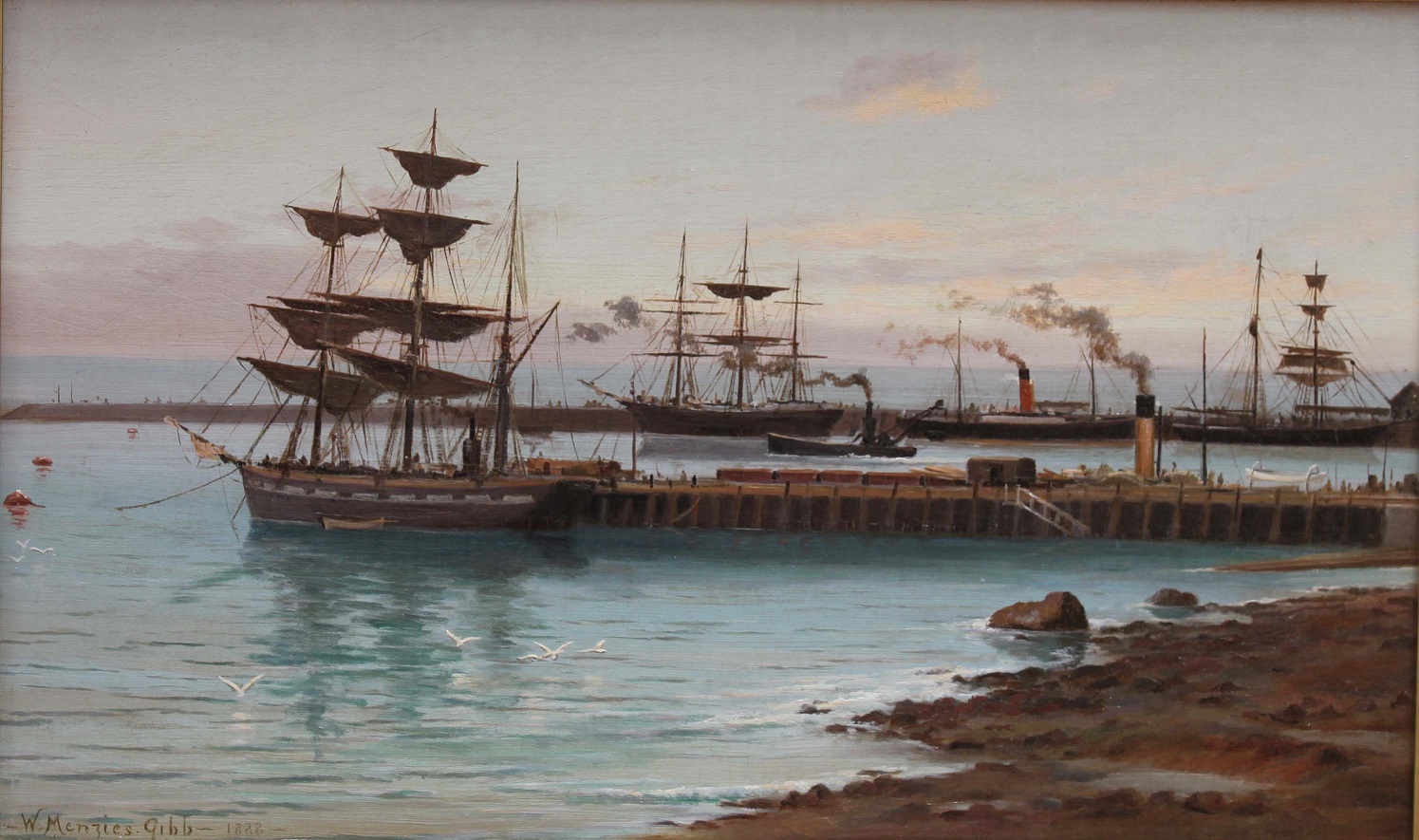
William Gibb (1859-1931)
Timaru Harbour, 1888
Oil on canvas
Aigantighe Art Gallery Collection 2002.10
William Gibb was born at Innellan, Scotland and immigrated to Christchurch in 1876. He received his art training from his father, John Gibb (1831-1909), and then studied at the National Gallery School in Melbourne from 1877 to 1879. He returned to Christchurch in 1882 and painted portraiture and landscapes.
In Timaru Harbour, Gibb has painted a snapshot of the shipping industry and the newly built wharves. Previously, ships anchored offshore and used smaller boats to transport their cargo ashore. But by the late 1860s, it was decided that this was restricting Timaru’s growth. In the 1870s and 1880s large concrete southern and northern breakwaters were constructed to shelter the area that would become the harbour. In 1880 the first wharf was built, followed by a second wharf in 1886.
Gibb has captured this scene of commerce with The Bruce (the central ship with a red and black funnel) and The Taniwha (the small dredge moving out of the port) and other sailing ships contrasted against the backdrop of a purple sky and the swelling of seemingly electric blue ocean.
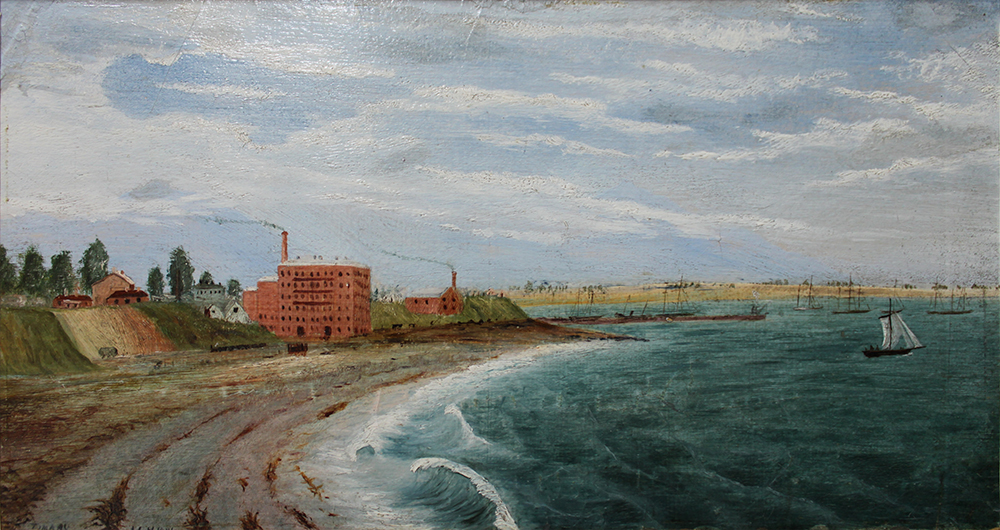
John Liddington Higgs (1864-1919)
Timaru Coastline, 1884
Oil on board
Aigantighe Art Gallery Collection 2002.1
In this painting John L. Higgs captures the view from Patiti Point looking north towards central Timaru and its harbour in 1884. He has given prominence to a large six-storey building known as the Timaru Milling Company.
The Timaru Milling Company building was built in 1882, replacing a wooden mill that burnt down on this site in in 1881. The mill was the first in New Zealand to use steel rollers rather than grindstones for milling. This fact and how the painting records the height and size of the new brick Timaru Milling Company, seems to be a celebration of the feat of engineering – a human accomplishment depicted alongside, and as a comparison, to the natural beauty, but also vast wildness, of the Timaru coastline.
John L. Higgs was the son of John and Alice Higgs who had a farm on Wai-iti Road. Higgs later moved to Blenheim, where he ran a picture framing and signwriting business for many years.
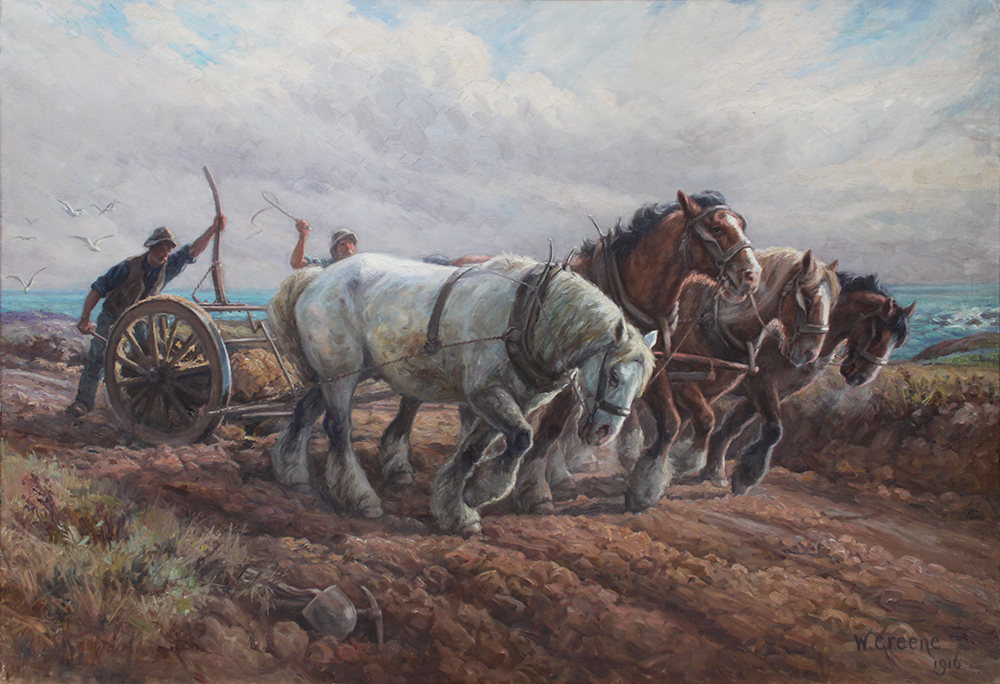
William Greene (1872-1925)
The Roadmakers, 1916
Oil on canvas
Aigantighe Art Gallery Collection 2002.10
William Greene was born in Australia and came to New Zealand with his family in 1874. After living in Dunedin and then Timaru, Green then left to study art in Melbourne and London. He returned to Timaru in c.1894 and took a teaching position at Timaru Boys High in 1912 and then in 1914 at the Timaru Technical College.
In London Greene had attended the Calderon School of Animal Painting in Kensington. He was an avid painter of horses, and The Road Makers, 1916, is a prime example of this. This seemingly effortless, vibrant and detailed painting of four horses ploughing a new road beside the sea is depicting an event that actually took place. The man situated on the left of the painting driving the team of horses (whose names were Star, Prince, Ben and Jock) is John Deans (1846-1932), a Farmer from Waimate who was contracted by the Borough Council to plough the roads. It took hard labour to level the ground and form new roads, but this was necessary for a growing town.
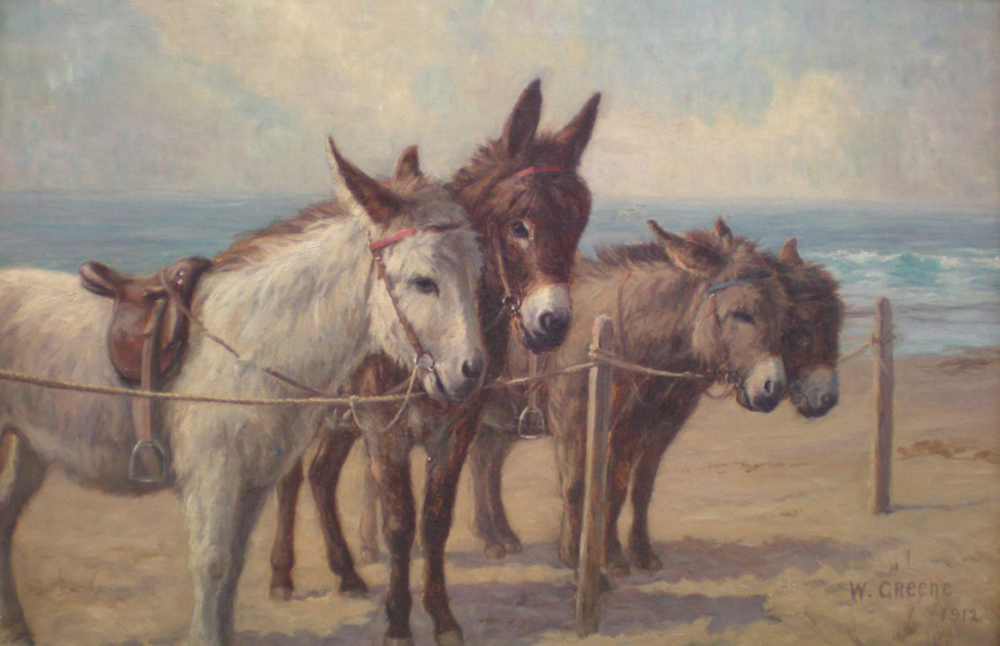
William Greene (1872-1925)
The Unemployed, 1912
Oil on canvas
Aigantighe Art Gallery Collection 2002.10
William Greene came to New Zealand with his family from Australia in 1874, they first located to Dunedin and then moved to Timaru. Greene then left to study art in Melbourne and London. He returned to Timaru c.1894 and opened his painting studio in Bank Street, near the Woollen Factory. Greene was also a founding member of the South Canterbury Art Society.
Greene loved to paint animals, particularly within rural landscapes. The Unemployed, 1912, is a painting of the well-known donkeys that gave rides at Caroline Bay. Children were delighted, during the summer months, with a ride up and down the beach on these donkeys – whose names are recorded from left to right as Snowball, Sambo, Emma and Matilda.
William Greene, in The Unemployed, has captured these famous donkeys in a moment of rest before the next eager rider arrives.
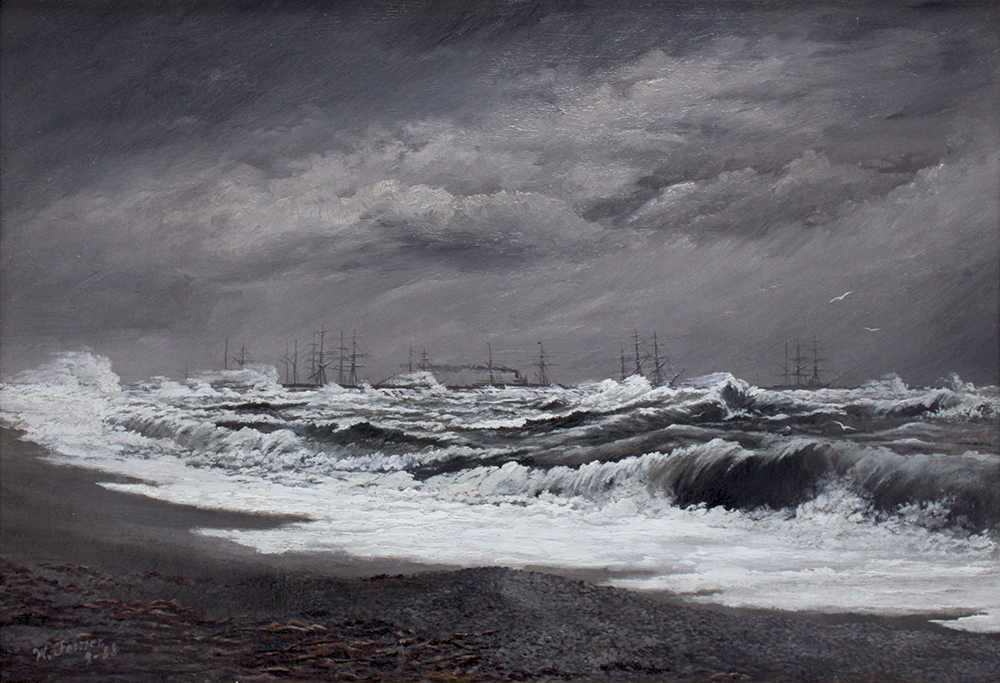
William Ferrier (1855-1922)
Breakwater Timaru Running a Southerly Gale,1888
Oil on canvas
Aigantighe Art Gallery Collection 2002.10
William Ferrier was born in Edinburgh, Scotland and immigrated to New Zealand in 1869. He trained as a photographer in Christchurch and Oamaru, and in 1881, set up his own studio in Timaru. Ferrier was the grandfather of the well-known New Zealand painter, Colin McCahon (1919-87), who was born in Timaru.
Ferrier is known for his success in documenting a vital part of Timaru’s history on photographic film, but he was also a painter. His landscape paintings were exhibited with the South Canterbury Art Society, of which he was a founding member. He was also a member of the Otago Art Society and Canterbury Society of Arts.
Breakwater Timaru Running a Southerly Gale was produced from one of Ferrier’s photographs (see reproduced above). This seascape, with its crashing waves and stormy skies shows the power of nature, and was a popular theme Ferrier returned to in both photography and painting.
